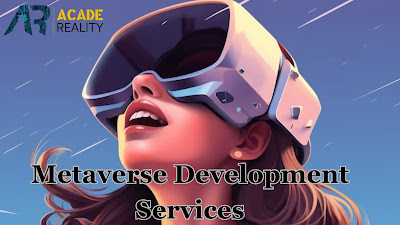NFT development: How to create, trade, and monetize digital assets
In the constantly changing landscape of technology and business, innovative services are regularly reshaping the way entrepreneurs approach engagement and value creation. One such revolutionary concept that has seized the attention of the entrepreneurial world is Non-Fungible Tokens (NFTs).
In a world where virtual content is king and possession is being redefined, NFTs have arisen as wonders that exceed standard boundaries.
NFTs
NFT development, or NFTs, are unique virtual assets that are traded and stored on a blockchain. Unlike cryptocurrencies such as Ethereum or Bitcoin, which can be exchanged on a one-to-one basis and are fungible, NFTs have distinct properties and are indivisible, which makes them unique.
These properties include provable authenticity, scarcity, and ownership, which are certifiable through the underlying blockchain technology.
How do NFTs work?
Best NFT services utilize blockchain technology to maintain and establish a decentralized ledger that records transaction and ownership history. Each NFT is signified by a unique token with metadata that describes its characteristics, such as video, audio, artwork, or any other digital content.
The transfer and ownership of NFTs are validated and tracked using smart contracts, which are self-executing contracts stored on the blockchain.
Step by Step process: NFT Development
While NFT development might seem like a difficult endeavor, we'll break down the development procedure into edible steps. From smart contract development and conceptualization to listing and minting on NFT marketplaces, you will gain a complete understanding of how to bring your NFT vision to life.
1. Conceptualization:
The NFT development company begins with a simple idea of what you want to tokenize. It could be in-game items, virtual real estate, videos, music, digital artwork, or any other unique digital asset. It would help if you defined the characteristics and attributes that make your NFT valuable and distinguish it from others.
2. Smart Contract Development:
NFT development is usually built on blockchain platforms that help smart contracts, such as Flow, Binance Smart Chain, Ethereum, etc. You'll need to inscribe a smart contract that conforms with the ERC-721 (Ethereum) or equal standard on other platforms. This contract describes the properties and rules of your NFT, including metadata storage, transferability, and ownership.
3. Metadata Creation:
Each NFT has connected metadata that offers additional information about the token. This metadata can include things like the links to the actual digital asset, creator's information, description, and title hosted on a separate server. It's regularly in the form of an IPFS (InterPlanetary File System) hash or JSON file.
4. Hosting the Digital Asset:
The actual virtual asset (music, artwork, etc.) linked to the NFT is hosted individually, typically on a decentralized storage system like IPFS. This confirms that the asset remains handy even if the holding platform goes down.
5. Minting the NFT:
"Minting" denotes the procedure of creating a different NFT. You'll use the smooth contract to create a new token with its related metadata. During this procedure, you'll describe the initial owner of the NFT, which could be someone else or yourself.
6. Testing:
Before beginning the NFT development, it's vital to carefully test the smart contract to fix and identify any potential bugs or vulnerabilities. Security is vital to ensure the safety of users' data and assets.
7. NFT Marketplace Integration:
To make your NFT development accessible to a huge audience, you'll need to list it on NFT marketplaces. These podiums allow users to trade, sell, and buy NFTs. Current examples include Mintable, Rarible, and OpenSea. Listing your NFT involves offering details like the images, description, title, and a link to the metadata.
8. Marketing and Launch:
Once your NFT is listed on the markets, you can formally launch it. Successful advertisement is vital to attract potential collectors and buyers. Utilize online communities, social media, and partnerships to build hype around it and promote your NFT.
9. Ownership and Sale Transfer:
Interested buyers can now buy your NFT using cryptocurrency (generally the native cryptocurrency of the blockchain platform, such as ETH for Ethereum). When an acquisition occurs, possession of the NFT is transferred to the buyer's virtual wallet, and the consistent payment is transferred to your wallet.
10. Ongoing Support:
After the sale, you need to offer ongoing provision to buyers, confirming that they can entrée their NFTs and that any matters are resolved promptly. Moreover, you might study creating more NFTs, collaborating with creators or other artists, and contributing to the evolving NFT ecosystem.
Remember, the NFT development procedure involves a combination of effective marketing, creativity, and technical knowledge to create a valuable and successful NFT project.
Wrapping up
The Non-fungible token market continues to grow, providing exciting opportunities for collectors, creators, and artists. By following the steps charted in this guide, you can board your trip into NFT development.
Remember to stay learning about the latest technologies and trends in the space to make the best use of your success.




Comments
Post a Comment